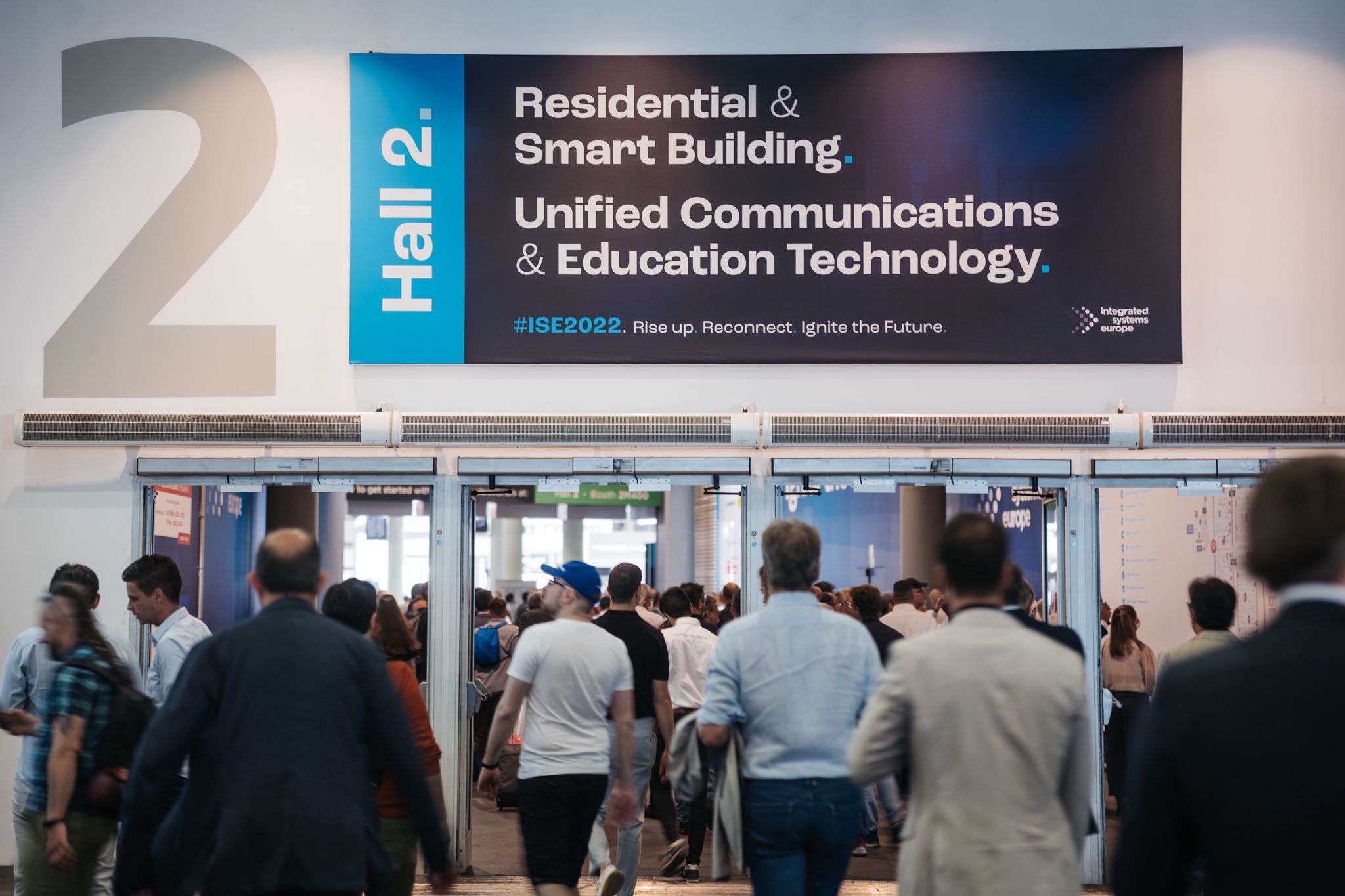In the final part of this special interview marking 20 years of ISE, Integrated Systems Events Managing Director Mike Blackman discusses how, and why, the content of the show has changed over time.
 When did Technology Zones first appear on the show floor?
When did Technology Zones first appear on the show floor?
When we started ISE, the idea was just to mix everything up because it makes people find things they may not be looking for. And when you only have 120 or a couple of hundred exhibitors, that's quite easy. But then the show started to grow.
The other thing that came about was that many companies would say, “I don't want to be next to my competitors,” but then they’d say, “I need to be near that company”. So we started to see that a lot of those companies who were competitive wanted to be in clusters anyway.
I think it was 2008 when we decided on the Technology Zones. Everything was still mixed when we came back to Amsterdam in 2007. But we were starting to say, “OK, how do we focus? How do we create growth in the other halls, and make it work to everyone's advantage?”
And you've added to those gradually over the years. How do you decide that the time is right to create a new zone?
Most of that is down to discussions with the marketplace, talking to exhibitors.
We see growth and clusters of potential companies making something big enough to be important.
And it’s something which our exhibitors are very keen to have as well. They want to be clustered together. The biggest companies – like Samsung and Crestron – you could put anywhere on the show floor and they’ll attract an audience. Other companies with complementary products and solutions will find the benefit of being near the big fish. And in turn, the big fish get feeder attendees coming in from the smaller companies as well. So there are benefits for everyone.
"ISE is too big for everyone to see in one day or a couple of days, and we felt we needed to help our attendees"
The second thing is the audience we're trying to attract. ISE is too big for everyone to see in one day or a couple of days, and we felt we needed to help our attendees. So the goal was to say, focus on the things which are the most important to you first and then take time to look at everything else. And for that it was better to try and cluster the technologies to make it easier for our attendees.
So we tend to look first and say, “OK, what are the areas that are growing within our industry?” The new one we launched last year was content production; that's been a growing area within ISE for a number of years but not something we saw as strong enough until then.
And then last year we saw a big boom because of a transition in the industry – we're seeing LED walls being used more and more for content creation and films. And there were some major things that happened in the last couple of years, like The Mandalorian where virtual studios became one of the major pushes. So as a result, those people who were looking at creating content, saw AV as being much, much more relevant than they did.
For a number of years, ISE has presented pay-to-attend conferences as well as free-to-attend keynotes and presentations. What's the philosophy behind that?
The keynotes we see as audience attraction, we're always looking for interesting thought leaders, people who have got something to say that can give a lot of interest generally across the industry.
One description I always use: ISE is like a publication, and there's advertising and editorial as part of every publication. The exhibitors are controlling the advertising; we can't tell them what they do with their booths. But as the organisers we have a responsibility to create neutral editorial content, things which are not selling to our attendees but giving them more information and background on the industry; and part of that is good, interesting stories that are relevant for them. That's where our keynotes and quite a lot of our presentations come in.
The other parts are thought leadership to help them understand what's going on. And again, this comes back to what we're trying to achieve as a show. It's not just reflecting what's going on, but something that will help companies develop what they do for the future of their business, and also help exhibitors to develop products and solutions that the industry wants.


